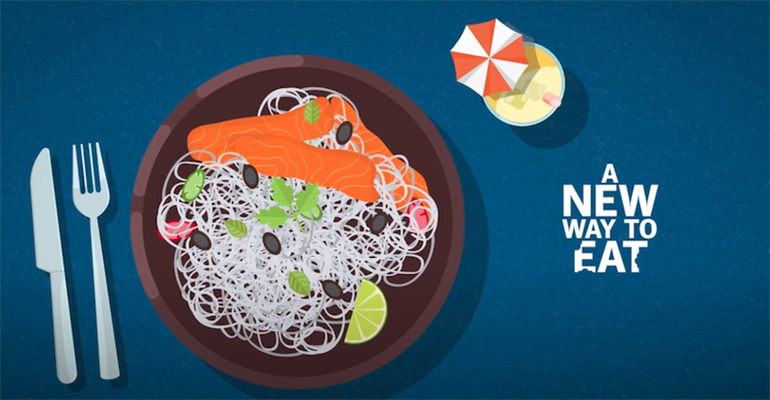News
New report shows that meat alternatives will reach $290B by 2035
31 Mar 2021Research from Boston Consulting Group and Blue Horizon Corporation revealed that by 2035, 11% of meat, eggs, dairy and seafood eaten globally will be made with alternative proteins. Numerically, that growth will correspond to an increase in production from 13 million metric tons a year in 2020 to 97 million metric tons by 2035, with a market valuation of $290 billion, a figure that is larger than Finland’s gross domestic product.
The estimation that alternative proteins will comprise 11% of the market was the base case scenario presented in the report. Faster technological innovation and full regulatory support could speed growth to 22% of the market by 2035. If growth in the alternative protein sector is expedited at such a pace, the report found that this would mean that Europe and North America would reach “peak meat” by 2025, at which point the consumption of animal protein there would actually begin to decline.

However, even if there are more alternatives to animal protein available, the question of price parity remains. As it stands, the cost of non-animal based protein is higher than conventional options, which has resulted in questions about the future of these alternatives and the feasibility of widespread access.
While price tags for plant-based and cell-based alternatives remain high, BCG found that plant-based alternatives such as burgers, dairy, and egg substitutes made from soy, pea, and other proteins will achieve parity in 2023, if not sooner. Other options will take longer though. Alternative proteins made from microorganisms like fungi, yeasts, and single-celled algae will reach parity by 2025, and alternatives grown directly from animal cells will reach parity by 2032.
Despite the current cost, progress in the space is happening rapidly and BCG said, “There is a real opportunity here for investors to make their moves early and become integral players in the future of food.”
Already, many investors have already taken their stake in the market. In 2020, an analysis by the Good Food Institute showed that $3.1 billion was invested in alternative proteins. This record-breaking figure surpassed the total $5.9 billion invested in this sector during the last decade and was triple the amount invested in 2019.
Still, the BCG report noted that “hundreds of billions” of dollars in investment will be needed to perfect alternative-protein technologies and scale them up to industrial levels.
With the pandemic prompting consumers to increasingly pay attention to the health halo – for both humans and the environment – associated with plant-based products and high profile reports painting a future where the conventional meat and dairy industry collapse, the sustainable plant-based and cell-based protein segment is ideally positioned to grow.
Not only is this choice economically appealing for companies, but shifting at such a large scale to these sustainable alternatives within the next decade will mean that companies are able to meet the goals stated in the Paris Climate Agreement and mitigate the environmental impact of food production in order to sustainably feed a growing global population. And having a sustainable business plan is something that studies have repeatedly shown attracts consumers and persuades them to spend even more on products to support progress toward sustainability.
